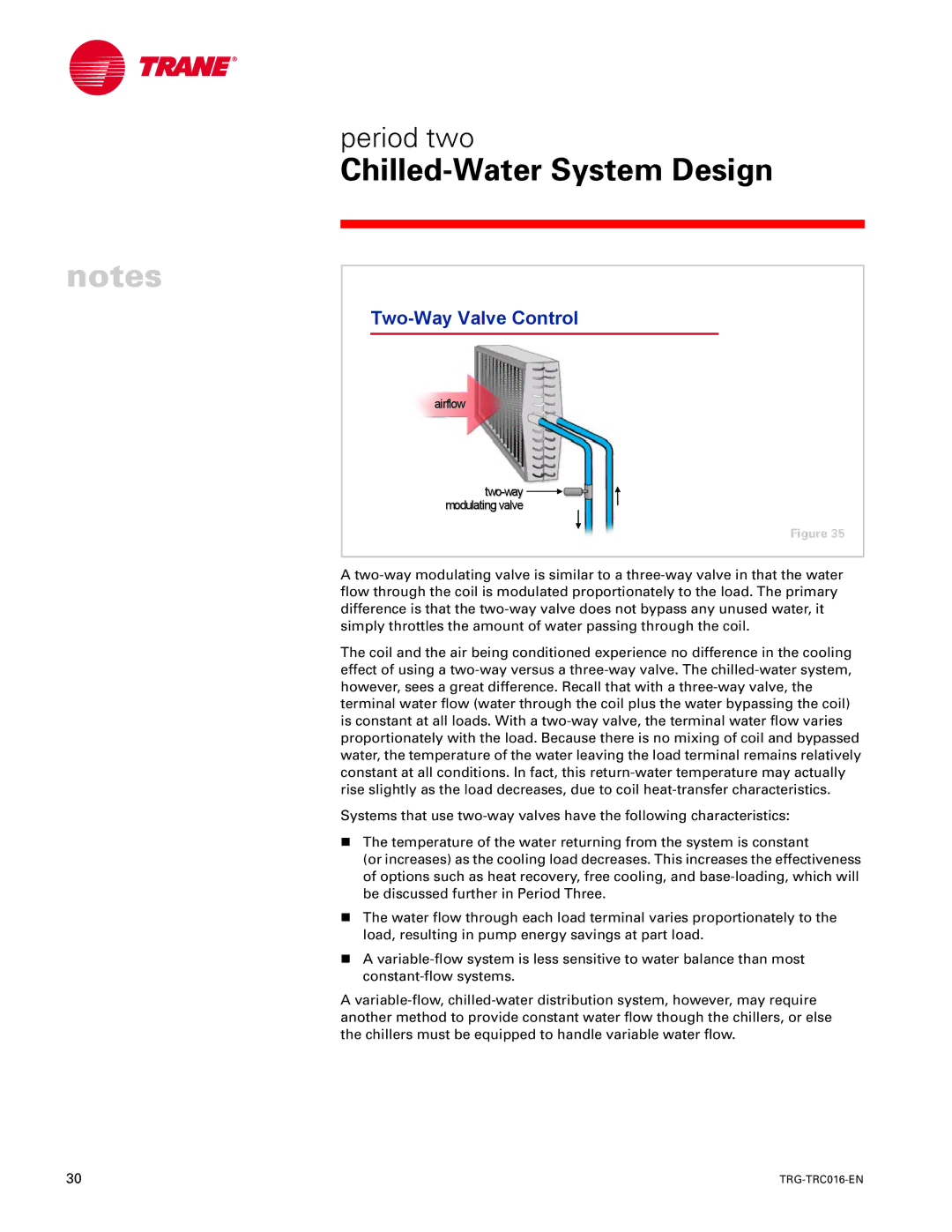period two
Chilled-Water System Design
notes
Two-Way Valve Control
airflow
two-way modulatingvalve
Figure 35
Atwo-way modulating valve is similar to a three-way valve in that the water flow through the coil is modulated proportionately to the load. The primary difference is that the two-way valve does not bypass any unused water, it simply throttles the amount of water passing through the coil.
The coil and the air being conditioned experience no difference in the cooling effect of using a two-way versus a three-way valve. The chilled-water system, however, sees a great difference. Recall that with a three-way valve, the terminal water flow (water through the coil plus the water bypassing the coil) is constant at all loads. With a two-way valve, the terminal water flow varies proportionately with the load. Because there is no mixing of coil and bypassed water, the temperature of the water leaving the load terminal remains relatively constant at all conditions. In fact, this return-water temperature may actually rise slightly as the load decreases, due to coil heat-transfer characteristics.
Systems that use two-way valves have the following characteristics:
nThe temperature of the water returning from the system is constant
(or increases) as the cooling load decreases. This increases the effectiveness of options such as heat recovery, free cooling, and base-loading, which will be discussed further in Period Three.
nThe water flow through each load terminal varies proportionately to the load, resulting in pump energy savings at part load.
nA variable-flow system is less sensitive to water balance than most constant-flow systems.
Avariable-flow, chilled-water distribution system, however, may require another method to provide constant water flow though the chillers, or else the chillers must be equipped to handle variable water flow.

